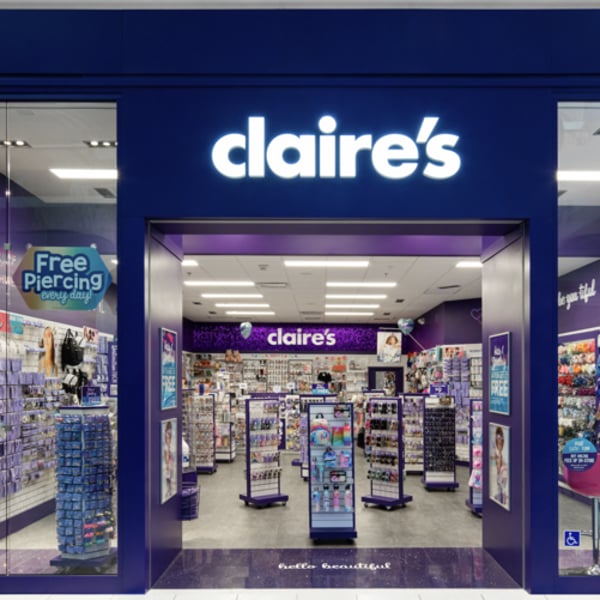“Look at these eyebrows!” said Chrissy Teigen, zooming the camera in on her forehead. They were perfect: thick, in the style of today, and as bushy as Hamptons privet.
It was Nov. 2021: Teigen had recently received an eyebrow transplant, and was showing off the results to her 35 million-plus followers. More specifically, she had received “Champagne Brows,” the proprietary technique developed by Beverly Hills facial plastic surgeon Dr. Jason Champagne, who collaborated with another Beverly Hills facial plastic surgeon, Dr. Jason Diamond, on Teigen’s arches.
Georgia Louise saw it all on her Instagram feed. Unlike Teigen, who told her followers that she overplucked during a thinner fashion brow moment, the British aesthetician had been rapidly losing hers due in part to a thyroid issue. Louise had tried microblading, a method of cosmetic tattoo where fine hairlike lines are sketched into the skin, which ended traumatically. One disqualifier for the procedure is having an oily skin type, a fact Louise was not apprised of until five months after getting hers done. The ink began to smudge, driving Louise — who, by virtue of her job modelling naturally good skin — to buy makeup from Anastasia Beverly Hills and Benefit.
But after seeing one of Teigen’s posts, Louise began contacting plastic surgeons before settling on Dr. Andrew Bared in Miami. Together, they decided to try a FUE, or follicular unit extraction, in which single hair follicles are pulled from the back of the head and reinserted into the face. In the end, 750 individual follicles were used to rebuild Louise’s brows.
Experts say the procedure is becoming increasingly common in the post-pandemic era of (selective) plastic surgery disclosure. Like Louise, Teigen’s post inspired many to inquire about the procedure. “That normalises the experience for a lot of people,” said dermatologist Christine Shaver in New York.
The International Society of Hair Restoration Surgery’s annual census reports that eyebrows comprise 4 percent of all hair transplants worldwide in 2025 (up from 2 percent in 2020). Most recipients are overpluckers, like Teigen, who become social media oversharers, like Teigen and Louise. Dr. Michael Mouzakis, a plastic surgeon in London, points out that the procedure is becoming popular with affluent civilians, particularly in the Middle East.
“To show that they’re wealthy, that they’re healthy, their eyebrows need to be perfect,” Mouzakis said, adding these patients tend to be female. Eyebrow transplants are more popular among women than men, even though men are far more likely to get hair transplants.
The Risky Business of Eyebrow Transplants
The FUE and FUT, or follicular unit transplantation, procedures are a little over 20 years old, and are themselves built on a discovery by a Japanese surgeon in 1988. FUT is contrasted with FUE, where a bigger part of the scalp is removed for follicle harvestation. It leaves a scar, but can be a very effective option for severe cases of eyebrow restoration.
Though the technology itself hasn’t changed much in the past two decades, it’s attracting new patients as a cosmetic procedure — and is increasingly being marketed as one. Search volume for eyebrow transplants are up 40 percent from 2015, according to Google Trends, but with a seismic surge after Teigen’s Nov. 2021 disclosure.
“It’s a really remarkable procedure,” said Louise. “You’re completely awake and completely comfortable.” She likened the operating room, where she spent over eight hours, as part science lab and artist studio.
A typical eyebrow transplant can cost around $8,000, explained Shaver, with variables based on how many grafts and where the doctor is located. Louise estimates she spent $12,000 on her procedure, and is also undergoing laser tattoo removal for her botched microblading, for a grand total exceeding $20,000.
Transplanted brows don’t behave like old ones, but the hairs on your head. Typically they’re taken from the most “genetically stable,” or least likely to bald, part of the scalp, in the back of the head beneath the bony bump known as the occipital protuberance. The colour is different, the texture is coarser, and the hair grows long. Transplanted hair follicles also cannot be removed.
Anybody can be a candidate. But Dr. Shaver recommends one type of patient approach with caution: Those who have been microbladed.
“I always hedge with my patients that when you’ve had microblading, that’s not natural eyebrow tissue anymore,” Shaver said. “It’s not as predictable, in terms of how the graft will grow in.” While becoming more popular, the transplant is not often the first stop on the eyebrow restoration journey, she added. Some of her patients do just fine with Latisse, or the growth peptide bimatoprost, more commonly applied to the eyelashes.
Louise seemed exhausted, but upbeat, when she appeared on Zoom, with no makeup and landscaped brows. “It’s been six months of correcting and perfecting,” she said. She’s taken to sharing her own “journey” on her Instagram, where she’s accrued over 80,000 followers as a celebrity facialist of some renown. “I’m channelling my Brooke Shields,” she added, noting that Shields is a client.
Sign up to The Business of Beauty newsletter, your complimentary, must-read source for the day’s most important beauty and wellness news and analysis.


